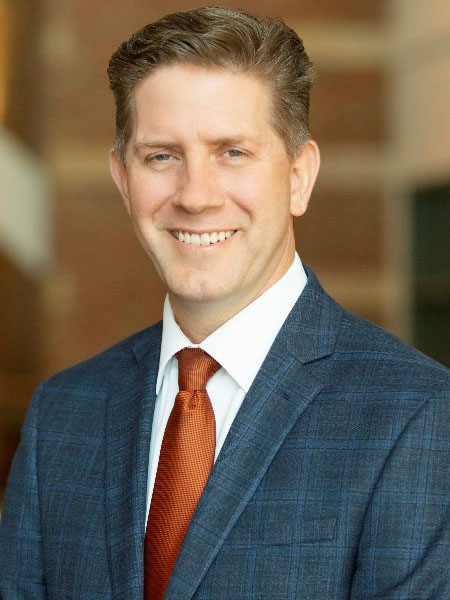The faculty members who originated the Strategic Initiative on Imaging at the University of Illinois set their goals high: help make the campus a world leader in imaging science and technological development. After just two years the Strategic Initiative on Imaging appears to be on its way to that distinction, a point emphasized by the popularity of an annual conference that highlights Illinois’s place in imaging science.
In order to increase awareness and facilitate connections on campus, the Strategic Initiative on Imaging played host to an inaugural conference last year that had close to 250 attendees even though registration was limited to the University. The second edition of the annual conference will be held Oct. 14-15 at the Beckman Institute and is slated to be a regional event. The theme of this year’s conference is “Imaging Without Boundaries” and the main focus of the two-day event will be on the computational aspects of imaging and visualization that cut across disciplines.
Stephen Boppart is co-chair of Beckman’s Integrative Imaging research theme and led the drive to create the Initiative on Imaging, an effort which now includes more than 150 faculty members and numerous campus units such as the Institute for Genomic Biology and the National Center for Supercomputing Applications (NCSA). He said last year’s conference helped propel the Initiative’s efforts on campus and beyond.
“We learned there was a lot of interest,” Boppart said. “We had people present very short talks on their research and we found there were a lot of new connections that could be made. That was exactly what we wanted this to do, to bring these people together from different fields and realize there are some commonalities.”
Marina Marjanovic is the Program Administrator for the Strategic Initiative on Imaging and a staff researcher in Beckman’s Bioimaging Science and Technology (BST) group who helped organize the conference. She said they chose the theme “Imaging Without Boundaries” because they wanted to “emphasize that imaging is crossing the areas, from the molecular level up to the astronomical level, and one bridge that could connect all of them is the computational side of imaging.”
Boppart said because of that, each session will feature one speaker on the topic of computation, and that NCSA’s involvement in these areas will be highlighted. NCSA Director Thom Dunning will provide welcoming remarks on the opening day of the conference.
“Because computation is really emphasized as a cross-cutting theme at the conference, NCSA is very closely involved,” Boppart said. “There’s a lot of synergy with us working together. This campus initiative needs to include NCSA as an important part of it.”
The list of speakers features scientists from across the Midwest, including speakers from Argonne National Laboratory and Adler Planetarium in Chicago, as well as Purdue and Michigan State, to name a few of the institutions represented.
The keynote lectures should be a highlight. Peter Jones from the University of Pennsylvania Institute for Medicine and Engineering will give Friday’s keynote lecture. Jones’s entry was a first-place winner in Science magazine’s 2009 Science and Engineering Visualization Challenge. The entry, which also served as the cover image for the issue announcing the winners, was an image of a 3.5 meter tall sculpture Jones co-created using 75,000 cable zip ties to depict five snapshots of computer simulations of lung cells.
Friday’s keynote lecture will be given by Donna Cox, Director of NCSA’s Advanced Visualization Laboratory (AVL) and a campus leader in public outreach and educational efforts involving scientific visualization. Cox and the AVL team contributed 22 percent of the film for the new documentary Hubble 3DIMAX narrated by Leonardo DiCaprio.
Darold Spillman, Program Administrative Assistant for the initiative, staff researcher in the BST group, and a conference organizer, said attendees will get a preview of the film during her talk.
“She is going to have it on her laptop and show portions of it,” he said. “She’ll be talking about her work with Warner Brothers and the Hubble 3-D movie. So we’re really excited about both those speakers.”
In addition, there will be speakers from outside academia at the workshop, including Yu-Sung Chang from Wolfram, Kevin King from GE, and Anna Keck from Carle Foundation Hospital.
“The other part that is different this year is we’re also reaching out to industry for outreach research talks and sponsorship,” Boppart said. “We’re not only reaching out regionally, but also outside of academia to medical institutions and industry.”
Carle is an outside sponsor of the workshop, along with the company ISS of Champaign, and the engineering society IEEE. The workshop and the initiative are supported on campus by the University of Illinois Vice-Chancellor’s Office for Research, the College of Engineering, and the Beckman Institute.
“This is really a campus effort,” Boppart said.
Boppart said plans are to go from a regional event this year to a national one in year three of the workshop.
“What we hope to get out of it for this year is to really start building a regional awareness of what we have here,” he said. “The more we talk to people, the more we realize what truly unique talent and resources we have here, found nowhere else.”
To register, or learn more about the workshop, click here.
